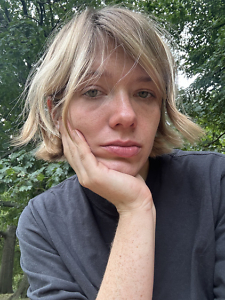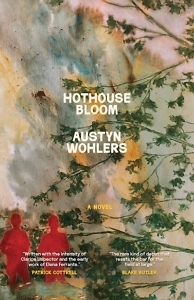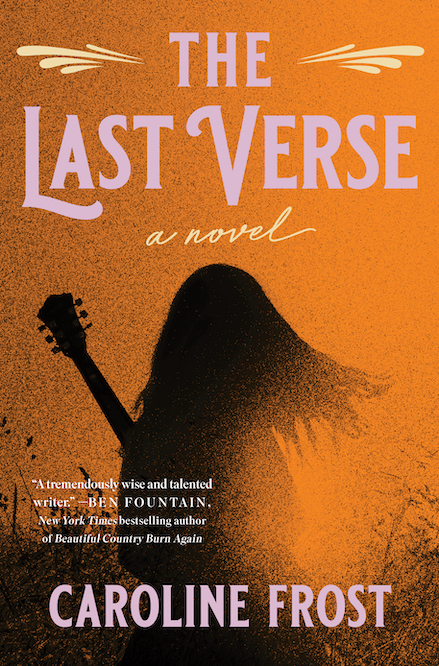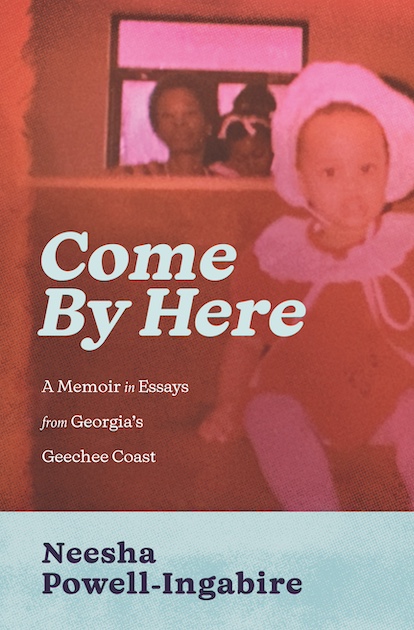A Certain Way of Living
The protagonist of Austyn Wohlers’ Hothouse Bloom is out of step with the world around her
To call someone a hothouse flower is to say they are particularly fragile and sensitive. They might need to be sheltered in a controlled environment since suboptimal conditions threaten their ability to thrive — or even to survive. In her debut novel, Hothouse Bloom, Atlanta native Austyn Wohlers complicates the typically pejorative term by choosing it as the metaphor for her story of a young woman, Anna, who leaves everything behind to care for the orchard she inherits when her estranged grandfather passes away.

Summarized like that, readers might assume this book is a straightforward pastoral escapist fantasy, like countless other versions of the dream of “getting back to nature.” But Wohlers isn’t interested in being straightforward, and while the lush scenery is tantalizing, Anna’s experience is hardly one of daydreams. At times it feels more like a nightmare as readers come to understand that the title might refer to a fragility born of Anna’s deep sense of alienation. Her disconnect is not merely because she has been transplanted into the unfamiliar soil of the apple orchard; instead, she appears to be eternally out of step — with her neighbors, with her friends, and with her time.
Formerly a painter (though not well known or financially successful), Anna’s way of seeing is that of a visual artist, all light and color. When she first arrives at the farmstead, we see it through her eyes, and color is everywhere:
Above her she saw a sparkling metal pinwheel spinning blithely on the roof of the cabin, which was made from wood and stone, with birch planks painted in patches of primary colors, wisps of green plants clinging to the cracks in the walls … there was an herb garden flowing out from the kitchen window, dead rosemary, dead mint, unknown bushes … a grove of bamboo extending out from the side of the house like an angel’s emerald wing.
She goes on to describe the “red and blue rain barrels, white wood sheds, a barn with a bird coop, a gray greenhouse with a green roof and a yellow door.” These waterfalls of visual impression are not isolated to the first moments of seeing; Anna is constantly looking. Having given up painting in favor of work on the orchard, she doesn’t feel it as a loss. “I never cared about a career. Painting was something I did in pursuit of a certain way of living,” she tells her friend Jan. “I wanted to understand and process the world without language, to see it through shape and light and color.”
 That world without language may be true for Anna, but Wohlers uses language in a painterly style, layering sentences thickly, the prose dense and almost cloying. Through a heavy use of ellipses, Wohlers lets her sentences bleed together like watercolors. Another unusual technique is long cascades of clauses, each separated by a colon. The effect is like passing through a series of rooms, every colon a doorway to another idea. Overall, there is a fluid, unsettled feeling to the narrative, which serves to emphasize how unsettled Anna herself feels. Nothing fits, there seems to be no remedy to the feelings that plague her, and though she tries repeatedly to explain what she is seeking to Jan, her explanations do little to assuage his concern. He tells her, “All your talk of looking scares me. You can’t just look at life. You have to live it.”
That world without language may be true for Anna, but Wohlers uses language in a painterly style, layering sentences thickly, the prose dense and almost cloying. Through a heavy use of ellipses, Wohlers lets her sentences bleed together like watercolors. Another unusual technique is long cascades of clauses, each separated by a colon. The effect is like passing through a series of rooms, every colon a doorway to another idea. Overall, there is a fluid, unsettled feeling to the narrative, which serves to emphasize how unsettled Anna herself feels. Nothing fits, there seems to be no remedy to the feelings that plague her, and though she tries repeatedly to explain what she is seeking to Jan, her explanations do little to assuage his concern. He tells her, “All your talk of looking scares me. You can’t just look at life. You have to live it.”
Despite Jan’s efforts to help, Anna is an opaque and isolated character. She understands her differences from those around her, and though she tries, she isn’t able to bridge the distance. She wishes to obliterate her sense of herself and often struggles to be with others: “Faced with Jan across the booth, Anna continued practicing her humanity.” Wohlers makes no effort to explain or rehabilitate her character, however. In fact, the novel feels at times like an arthouse film: heavily crafted, full of beautiful scenery and complex characters, self-conscious and inscrutable.
The final scene, which comes out of nowhere, leaves readers to pull all these elements into a cohesive whole, and for some, this open-ended quality may be frustrating. For others, perhaps those who appreciate the unexpected and prefer to probe the uncertainties of a piece, it will be just the thing.

Sara Beth West is a librarian and a freelance writer focusing on book reviews and author interviews. In addition to Chapter 16, publications include Kirkus, Shelf Awareness, BookPage, Southern Review of Books, and more. She lives in Chattanooga.


